| | | August 2016 |  |
| |  | |
| | |
"We started our development project through BizSpark and Azure. We needed a reliable host to house our development and our future clients. We were developing Business Continuity Planning software for credit unions and community banks based on 40 years of experience. We used SharePoint as the platform as that was the best tool for user interface. We put up our first bank in January and have added five credit unions since then. Azure has been a great partner providing 100 percent uptime, easy billing, and great statistics. We continue to roll out enhancements and additional features. So far, our users love the product." —Hugh Smallwood, CEO, MyRecoverySite.com
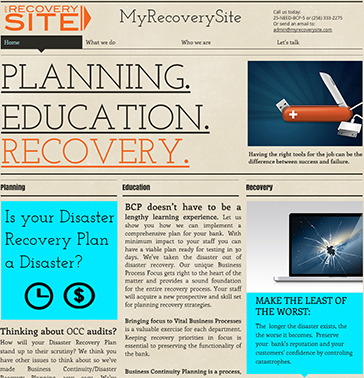
| | | |
Gartner, for the third year in a row, has positioned Microsoft in the Leader Quadrant in the 2016 Magic Quadrant for Public Cloud Storage. Only Microsoft and AWS remain as Leaders in the report, both having moved up and to the right since 2015. The report states that hyperscale cloud providers are dominating the market for public cloud storage in terms of product innovation, scale, and revenue, and that by 2019, at least one-fourth of the vendors in this Magic Quadrant will have exited the cloud storage market. Gartner advises, "customers should be wary of using providers that lack meaningful scale and global presence due to slow product innovation and the realistic possibility of service closure. This report joins other recent cloud MQs (Cloud IaaS, Application Platform as a Service, Identity as a Service, Disaster Recovery as a Service), which we believe validates strong Microsoft enterprise cloud leadership.
**Gartner does not endorse any vendor, product, or service depicted in its research publications, and does not advise technology users to select only those vendors with the highest ratings. Gartner research publications consist of the opinions of Gartner's research organization and should not be construed as statements of fact. Gartner disclaims all warranties, expressed or implied, with respect to this research, including any warranties of merchantability or fitness for a particular purpose.
| | | |
Are you interested in how you can drive application innovation, generate new revenue, and reduce costs? Forrester found that businesses can realize up to 466 percent return on investment (ROI) by using Azure PaaS for application development and deployment; however, many customers lack a holistic framework to evaluate the potential impact of leveraging Azure PaaS for their organizations. To better evaluate the economic benefits of Azure PaaS, you can use Forrester's Total Economic Impact (TEI) model. Download the report free.
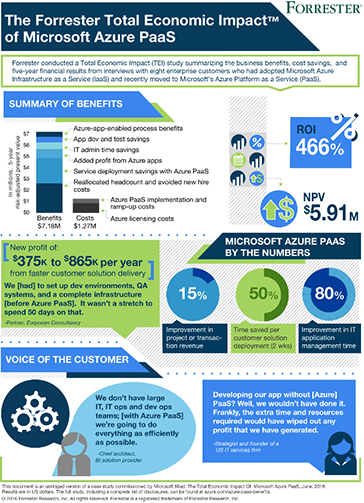
| | | | Upcoming Events | IBC2016
September 8, 2016
Amsterdam, The Netherlands
Microsoft Ignite
September 26, 2016
Atlanta, Georgia
DrupalCon
September 26, 2016
Dublin, Ireland
Strata + Hadoop World
September 27, 2016
New York, New York
GeekWire Summit 2016
October 4, 2016
Seattle, Washington | Microsoft Developer Camps
events.msdn.microsoft.com | | Careers | | | | Bring your vision to ours and help shape the future of the cloud. | | | | |
| | |
Azure Active Directory B2C is a cloud identity service that helps you stay connected with your customers. Built on Azure Active Directory (Azure AD), the cloud identity platform that handles billions of authentications per day, Azure Active Directory B2C is a highly available global identity-management service for consumer-facing applications that scales to hundreds of millions of identities. It can be easily integrated across mobile and web platforms. Your customers can sign in to applications through fully customizable experiences, using their existing social accounts or by creating new credentials. For more information, visit the Azure Active Directory B2C: Sign up and sign in consumers in your applications documentation webpage.
| | | |
Azure Active Directory (Azure AD) conditional access policies let you apply access rules to any Azure AD-connected application such as Office 365, Salesforce.com, Box, ServiceNow, and other SaaS, custom, or on-premises web applications. More-sensitive apps can be assigned stricter policies for all or specific groups of users, such as requiring Azure Multi-Factor Authentication or blocking access outside of the corporate network, while less-sensitive apps can have policies that are more open. Conditional-access policies are available through Azure AD Premium.
| | | |
Starting this month, Microsoft Authenticator is the new mobile application that will replace Azure Authenticator, the Microsoft account app, and all other Microsoft-published enterprise and consumer authenticator apps for Android, iOS, and Windows. This new app quickly and securely verifies a customer's identity online for all of their accounts. It provides Azure Multi-Factor Authentication for Microsoft and third-party personal, work, or school accounts through notifications or one-time passwords. Customers can use this app to register their device with their company's Azure Active Directory and get seamless single sign-on to mobile applications. Later in 2016, customers will also be able to use the app to unlock Windows 10 devices and sign in to Microsoft accounts without using a password.
| | | |
Operations Management Suite (OMS) Security is now generally available for both OMS and Azure Log Analytics customers. OMS Security is a cloud-based service that enables customers to quickly and easily assess the security posture and detect security threats across hybrid cloud environments. With OMS Security, you can quickly and easily see a holistic view of the security status of your entire IT environment; combine log event data, threat intelligence, and Microsoft security expertise to detect security threats to your hybrid cloud environment sooner; contain and remediate threats and breaches earlier to prevent or mitigate damage or exfiltration; take advantage of the low cost data storage of a cloud‐based management solution for a more complete and accurate security data set; and streamline security and compliance audits with a searchable, complete, and accessible data set.
| | | |
New features for certain services in Operations Management Suite are now available. You can preview how Azure Backup supports additional monitoring and alerting capabilities from Windows Server machines and IaaS virtual machines, including alert configuration for backup failures. You can now also preview the Network Performance Monitor in Log Analytics, for near-real-time monitoring of parameters like loss and latency, fault localization, and diagnostics, as well as for troubleshooting network problems.
| | | |
As our customers build even more powerful applications in Azure using Azure SQL Database, they need more options to scale performance for high-demand workloads. That's why we're announcing a new performance level within our Premium service tier: P15. P15 offers 4000 Database Transaction Units (DTUs)—that's twice as powerful as our P11 offering—with extremely fast transactional performance, real-time analytics, and up to 1 TB of storage. An advantage to running an SQL database on Azure is being able to scale performance up or down, on the fly, to adapt to changing workload demands. This new performance level lets you scale up database performance for explosive growth of application workloads. For more information, please visit the SQL Database options and performance: Understand what's available in each service tier documentation webpage.
| | | |
You can use Azure Active Directory (Azure AD) authentication to manage the identities of database users and other Microsoft services in one central location. Azure AD enables a single sign-on experience via Azure SQL Database and Azure SQL Data Warehouse, and you can synchronize a federated on-premises Active Directory instance with Azure AD. As a single place for identities for managed and federated domains, Azure AD simplifies the permission model and provides an alternative to Microsoft SQL Server authentication so you can stop the proliferation of user identities across database servers.
| | | |
JavaScript Object Notation (JSON) support is now generally available in Azure SQL Database. It enables you to build and exchange data with modern web, mobile, and HTML5/JavaScript single-page applications, and to analyze logs and messages collected from different systems and services. With new JSON functions you can easily integrate your SQL database with any service that uses JSON. To learn how to integrate JSON in your application, check out the SQL Server Blog, JSON Data (SQL Server) documentation webpage, or SQL Server 2016 and JSON Support video. To learn about various scenarios that show how to integrate JSON in your application, watch some demos in this JSON as a bridge between NoSQL and relational worlds video, or find some scenarios that might be interesting for your use case in these JSON blog posts.
| | | |
Azure SQL Data Warehouse is now generally available in additional regions—North Europe, Japan East, Brazil South, and Australia Southeast—bringing it to a total of 22 regions worldwide. SQL Data Warehouse is your go-to SQL-based view across data, offering a fast, fully managed, petabyte-scale cloud solution. It decouples compute and storage for the freedom to scale and right-size your environment. You pay only for the storage you use and the compute you want, just when you need it. Plus, SQL Data Warehouse offers the unique option to pause compute, giving you even more freedom to better manage your cloud costs.
| | | |
Azure Machine Learning offers cloud-based advanced analytics designed to streamline machine learning for business, allowing users to model their way, with best-in-class algorithms. The finished model can then be deployed in minutes as a web service that can connect to any data, anywhere. Users can create a web service and deploy it to multiple subscriptions, regions, and resource groups. They can automate web services creation using APIs or through the Web Services Management Portal interface. Users can also access more usage statistics (for example, how many times the job is run, runtimes, transactions, and more) and simplify the testing of Machine Learning functions using sample data. For more information, visit the What's New in Azure Machine Learning documentation webpage.
| | | |
Microsoft Cognitive Services is a collection of APIs that enables developers to tap into high-quality vision, speech, language, knowledge, and search technologies—developed through decades of Microsoft research—to build intelligent apps. The following APIs are now available: Computer Vision API gives you the tools to understand the contents of any image; and Academic Knowledge API helps tap a wealth of academic content by applying the Knowledge Exploration Service to the Microsoft Academic Graph.
| | | |
With Microsoft Stream, organizations can connect, collaborate, and learn via the power of video. Built for organizations of all sizes, Microsoft Stream makes it easy to upload, organize, and share videos across an entire company. You can start using it in just a few minutes to consolidate and organize all of your videos in one easily searchable destination. It's hassle-free and always on. Anyone in the company can upload and share videos. Industry-leading encryption provides peace of mind, while customizable privacy settings let you limit access or share widely.
| | | |
Apple FairPlay Streaming (FPS) is Apple's digital rights management (DRM) format that protects both Video on Demand (VOD) and live streams. With FairPlay, you can extend your reach to the newest version of Apple TV by building a FairPlay Streaming solution programmatically via APIs. Combined with existing PlayReady and Widevine DRM support, Azure Media Services provides a single point of control for you to quickly build a multi-DRM solution. Get started by reading the Stream premium content to Apple TV with Azure Media Services blog post.
| | | |
Azure Media Services functionalities are now available through the Azure portal. All existing features in the Azure classic portal are available in the Azure portal. Check out the Azure Blog post for more details.
| | | |
Azure Media Services resources can now be created and managed programmatically using APIs provided by the Media Services Resource Provider. The APIs are available through Azure Resource Manager REST API endpoints. Read this blog post or MSDN documentation for details.
| | | |
The Logic Apps feature of Azure App Service lets you build powerful integration solutions quickly, using prebuilt connectors to SaaS and enterprise applications and a visual designer to easily automate business processes and workflows. Logic Apps seamlessly connects both your on-premises systems and cloud applications, and you can also leverage existing BizTalk Server investments and connect to cloud applications. With Logic Apps, you can use other services, like Azure Machine Learning and Microsoft Cognitive Services, to gain insights from your connected systems and make informed business decisions. For more information, visit the What are Logic Apps? documentation webpage.
| | | |
Azure Service Bus is a messaging infrastructure that allows applications to exchange messages for improved scale and resiliency. The Service Bus Premium messaging tier is fully supported with a 99.9 percent service level agreement (SLA). Premium messaging offers high reliability and throughput, increases message size to 1 MB, and is available across seven regions: Southeast Asia, East Asia, West Europe, North Europe, Central US, West US, and East US. For more information, visit the Service Bus documentation webpage.
| | | |
The new generation of D-Series instances is now available in Brazil South. These Dv2 instances carry the same CPU, memory, and disk configurations as the current D-Series, but offer more powerful CPUs and run about 35 percent faster. Both D-Series and Dv2 instances are ideal for applications that demand fast CPUs, better local disk performance, or larger memories—a powerful combination for many enterprise-grade applications. For more information, visit the Virtual Machines and Cloud Services webpages.
| | | |
Azure Virtual Machines customers can take advantage of the G-Series instances now available in Australia East, Canada Central, and Canada East. They feature the latest Intel Xeon processor E5 v3 family and provide unparalleled computational performance, more memory, and more local solid-state drive (SSD) storage than any current virtual machine size in Azure, making it ideal for your most demanding applications.
| | | |
The N-Series instances for Azure Virtual Machines are the fastest GPUs in the public cloud. N-Series instances are enabled with NVIDIA's cutting-edge GPUs to allow you to run GPU-accelerated workloads and visualize them. These powerful sizes come with the agility you expect from Azure. We've partnered with NVIDIA to deliver these capabilities in Azure, including making sure the virtual machines are optimized to deliver the highest possible performance. The preview starts in the South Central US region and will expand to additional regions as we approach general availability before the end of the year. If you're interested in participating in the preview, visit the Introducing NVIDIA GPUs in Azure webpage. For more information about the technology and use cases for the N-Series, watch the Leveraging NVIDIA GPUs in Azure video.
| | | |
While critical Host OS security updates previously caused a reboot, most virtual machines now benefit from Azure in-place virtual machine migration that only pauses them for up to 30 seconds, while the local temporary disk and memory state are preserved. Customers' virtual machines already benefit from this capability for certain critical security updates and, with an upcoming platform update later in 2016, we'll eliminate the need for virtual machine reboot for most Host OS patches. Our goal is to eliminate the need for virtual machine reboots for all Host OS updates.
| | | |
A virtual machine can encounter issues caused by user configurations or host infrastructure. If you have exhausted all other options under the troubleshooting menu, we suggest redeploying your virtual machine to a new host. The original virtual machine, including the local disk, is deleted, and the configurations and associated resources are transferred to a new virtual machine of the same size on a new host. This operation can be completed on Linux virtual machines through the Azure command line interface (CLI), on Windows through Azure PowerShell, or through the Azure portal for both.
| | | |
VNet Peering for Azure Virtual Network lets you directly link two virtual networks in the same region. Virtual machine resources in both virtual networks can connect directly through private IP addresses as if they were part of the same network. VNet Peering routes packets between virtual networks through the internal Azure backbone network so there's no gateway in the path. This allows for a low-latency, high-bandwidth connection between virtual machines in the virtual networks. VNet Peering also allows transit through the peered VNets, so a Network Virtual Appliance or a VPN gateway in one virtual network can be used by a virtual machine in another peered VNet. Peering works across virtual networks in different subscriptions and between an ARM (V2) and ASM (V1) virtual network. It does not work between two ASM virtual networks.
| | | |
Azure Premium Storage is a solid-state drive (SSD)–based storage solution designed to support input/output (I/O)-intensive workloads. With Premium Storage, customers can add up to 64 TB of persistent storage per virtual machine, with more than 80,000 I/O Operations Per Second (IOPS) per virtual machine, and extremely low latencies for read operations. Offering an SLA for 99.9 percent availability, Premium Storage is now available in the Brazil South region, as well as other regions previously announced.
| | | |
Customers who have purchased through an Enterprise Agreement (EA) can now see their EA pricing while provisioning new resources in the Azure portal. This will help users get a more accurate idea of the billing impact of provisioning a resource. Note that, as a prerequisite, the user must be authorized by their enrollment admin to view pricing. Also, EA Indirect users can see pricing only if their reseller has released it.
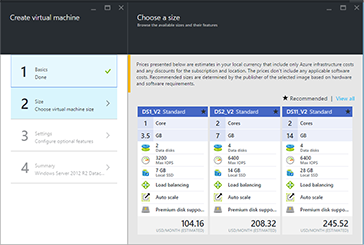
| | | |
| | |
The new Microsoft Data Science Summit is a two-day intensive event for data scientists, big data engineers, managers, and machine learning practitioners. Join your peers and industry leaders to take on real-world challenges, build connections, and go deep into the disruptive technologies that can give your business key insights and competitive advantages. The summit features three specialized tracks—Advanced Analytics, Big Data, and Solutions—so you can focus on the knowledge you want. Register today to reserve your spot. We look forward to seeing you in Atlanta from September 26 to 27, 2016!
| | | |
Azure Friday's Scott Hanselman learns how Azure Container Service can be used to scale your Docker and container-based workloads more easily than ever. Watch it now.
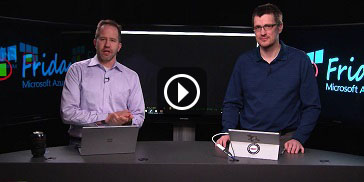
| | | |
What if you could take advantage of the cloud to achieve efficiency and innovation across business domains and applications for your entire IT portfolio? With a good road map and proven strategies to lead the way, you can. The enterprises that are ahead in cloud adoption have both a vision and clear process for making and acting on decisions. A thorough strategy can support you at any stage in the journey, from assessing your application catalog, to charting your course, to gaining a competitive edge. In this on-demand webinar, learn how to lead the journey to the cloud and how to drive innovation within your organization.
| | | |
Microsoft IT is leading the company's vision of "Microsoft runs in the cloud." To advance that vision, Microsoft IT created processes and teams to migrate more than 2,100 internal applications from on-premises servers to the cloud. The biggest challenge wasn't technology, but a cultural change within the organization. Using a cohesive strategy and process, Microsoft IT has changed its culture and integrated cloud adoption into the business. Read the case study to learn more.

| | | |
Register for this on-demand webinar to learn more about migrating to Microsoft SQL Server with free licenses. When it comes to managing your data and lowering costs, there's really no comparison. Learn more about SQL Server's proven ability to lower total cost of ownership (TCO); how SQL Server beats Oracle in price/performance; SQL Server's built-in mobile BI and advanced analytics capabilities; best practices and tips for migration; and our limited-time offer to move to SQL Server with free licenses.
| | | |
Microsoft is on a complex, multiple-year journey to adopt cloud computing across the enterprise. Learn how we developed our cloud strategy, made cultural shifts, and changed processes at Microsoft to help make this journey a success. Read the case study to learn more.

| | | |
You're a developer who wants to build, deploy, and manage applications that serve users worldwide, at speed and scale. Azure is a rich and powerful platform that enables you to do just that. In this August 31, 2016, webinar, discover our comprehensive set of app platform services and how they support your application development needs. Find out where to begin when building apps in Azure; discover the advantages of our broad range of services; examine the most common architectural approaches and design patterns for building apps; and learn about Azure through common customer solutions.
| | | |
On September 13, 2016, from 9:00 AM to 12:00 PM Pacific Time (UTC-7), join our special event exploring how emerging technologies can change the world and your organization. You'll hear from leading researchers and experts on the Internet of Things (IoT), augmented reality, artificial intelligence, and more. Register now.
| | | |
In this on-demand webinar, we explore the biggest challenges businesses face in adopting the Internet of Things (IoT) and strategies for overcoming them. You'll also learn more about the path to IoT business value; how IoT can create efficiencies in existing processes and enable new strategies; the flexible tools and solutions that can help you create successful pilot projects; and the organizations that are currently transforming their businesses through IoT.
| | | |
Access this on-demand webinar to see which best practices Microsoft employs across cybercrime, cybersecurity, and cyber defense to keep your customers' data safe. What are technology providers doing to protect enterprise customers like you? How are they proactively combatting cybercrime? Learn how the Microsoft Cyber Defense Operations Center teams protect, detect, and respond to threats; how the Microsoft Digital Crimes Unit fights malware, reduces digital risk, and protects vulnerable populations; as well as how intelligence gained from these operations helps improve security for our customers.
| | | |
In this episode, learn about the partner ecosystem for Visual Studio, Blockchain, and Visual Studio Marketplace; find out what Blockchain is and how it works; and hear about what Microsoft is doing to make it easier to build Blockchain-based applications.

You may also be interested in the episode on Azure SQL Data Warehouse.
| | | |
In this Microsoft Virtual Academy course, a team of experts walks through the ways development teams use Azure, Visual Studio, and Visual Studio Team Services to configure enterprise cloud-ready development and testing environments. Get the details on how, as a Microsoft Enterprise Agreement customer, you can get lower MSDN rates on virtual machines, cloud services, and Azure HDInsight, along with reduced rates on other services.
| | | |
| | |  | | |
Americans spent more than $60 billion USD on their pets in 2015. That figure corresponds to the elevation of pets from mere backyard beasts to beloved family members who sleep in their owners' beds. Vetco Clinics, a subsidiary of Petco—a leading pet-specialty retailer—helps Americans keep those family members healthy with preventive services such as vaccinations and diagnostic screening.
Learn more
| | | | |  | | |
"Eat your own dog food" is a well-known phrase in the tech world that means a company uses its own products. Or in the case of IT consultancy Convergent Computing (CCO), you use the products that you recommend to customers. CCO has been putting early versions of the Windows Server 2016 operating system through its paces in its own business and is satisfied with early findings.
Learn more
| | | | |
| | | 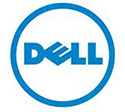 | | | Dell Software Administrator for Office 365 provides centralized management | | | |
Gain clearer visibility and better security for Microsoft Office 365, SharePoint, and OneDrive for Business using a single intuitive management console. Administrator for Office 365 offers automated provisioning to perform user-lifecycle management and comprehensive reporting to simplify management and get business insights from your data. Improve security administration and perform complex actions for remediation with the touch of a button.
Visit Marketplace page
| | | | |  | | |
Citrix XenApp is an industry-leading solution for virtual application and desktop delivery, providing Windows apps and server-based desktops to workers on any device, anywhere. When deploying XenApp in Azure, applications and desktops are secured in the Azure cloud to protect sensitive information and enhance corporate security. Plus, with Azure's global and growing presence, you can now run your applications closer to your user base. Download this document to learn why it makes sense to use XenApp in Azure.
Visit Marketplace page
| | | | |  | | |
DataStax Enterprise (DSE) built on Apache Cassandra is a distributed database that lets you build cloud applications whose infrastructure spans private and public cloud environments. DataStax is Microsoft 2016 Global Commercial ISV Alliance Partner of the Year. Together, we deliver tightly integrated database solutions architected for cloud applications via the Azure cloud. DSE is a distributed database for your most intensive transactional workloads. Try it on Azure now and discover why and how innovative companies are using this combined solution.
Visit Marketplace page
| | | | |  | | |
Octopus helps you automate your .NET application deployments, whether they're on-premises or in the cloud. It integrates with your development team's existing tool chain for reliable, secure, automated deployments to multiple environments. Octopus is easy to install and configure from Azure Marketplace, allowing companies to take full advantage without having to manage infrastructure. Users of all technical levels can use Octopus to deploy software to multiple machines in parallel with a single click, avoiding errors and risk. Tour the features in Octopus Deploy.
Visit Marketplace page
| | | | |  | | |
Use KNIME for effortless access to all of your data; to apply powerful analysis and statistics; and to visualize and create compelling reports—for free. There are no artificial restrictions to the open-source KNIME Cloud Analytics Platform. KNIME on Azure Marketplace provides the scalability and cost agility of a public cloud, while also allowing deep control over the underpinning IT stack.
Visit Marketplace page
| | | | |
| | | Hello!
Microsoft Imagine Cup, our yearly student technology competition, recently wrapped up, and it's exciting to see what the different teams created using various Microsoft technologies. No doubt that many of these young developers will go on to innovate technology in ways that we haven't yet imagined. Congratulations to the winners and everyone who participated. Please share with us and our subscribers how you are innovating.
Miwa | |
 | | | |
|
No comments:
Post a Comment